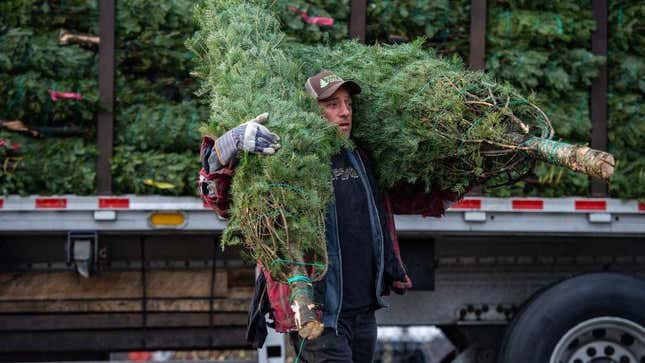
This year’s Grinch is the ongoing U.S. drought, and it’s affecting Christmas tree farms all over the country. They’ve seen smaller tree yields and more dead trees, which has meant higher prices for customers.
A tree farm in Meridian, Texas had to shut down its cutting field this month, KCEN-TV News reported. Owners pointed to the dry conditions in the state. “It was a hard decision to make to say that we just don’t have trees that will be pleasing to people,” Kathy Radde, co-owner of Radde Tannenbaum Farm in Texas, told KCEN-TV. “We just knew it is better to lay out a year with cutting and give the trees a chance to be beautiful again.”
Over in Kansas, Prairie Pines Christmas Tree Farm owner Kip Scott opened his cutting field for families the day after Thanksgiving. But he told KWCH-DT News that this year’s drought has affected his crop as well. Scott planted thousands of trees earlier this year but lost about 75% of them to the dry conditions. Those trees would have grown and been available for buyers in about five years. It takes anywhere from six to eight years for some Christmas tree varieties to grow large enough to sell, according to the American Farm Bureau Foundation.
The impacts of drought coupled with inflation will likely mean higher prices for Christmas tree fans, as Good Morning America reports. One industry leader told GMA that customers can expect “5% to 20% increases across the board on artificial and live Christmas trees this year.”
States along the Northeast have not been spared, either. The state of Massachusetts was especially pummeled by flash drought this year. By mid-July, 80% of the state was experiencing moderate to severe drought. One of the state’s Christmas tree farmers lost more than 1,000 trees that he planted this spring due to the hot and dry weather, CNBC Boston reported. This is about a 95% loss from that crop, the farmer estimated. Tim O’Connor, the head of the National Christmas Tree Farm Association, told CNBC Boston that local farmers are working to identify quicker-growing holiday trees and varieties that need less water. He’s hopeful that it will help make up for some of this year’s losses.
The ongoing drought has affected other industries. Tomato, onion, and garlic growers have gathered lower yields this year as major water sources like the Colorado River experience historically low levels. In October, the National Oceanic and Atmospheric Administration said the country is on track for another super-dry winter. Almost all of Texas, Kansas, and California are expected to continue experiencing drier-than-average conditions.